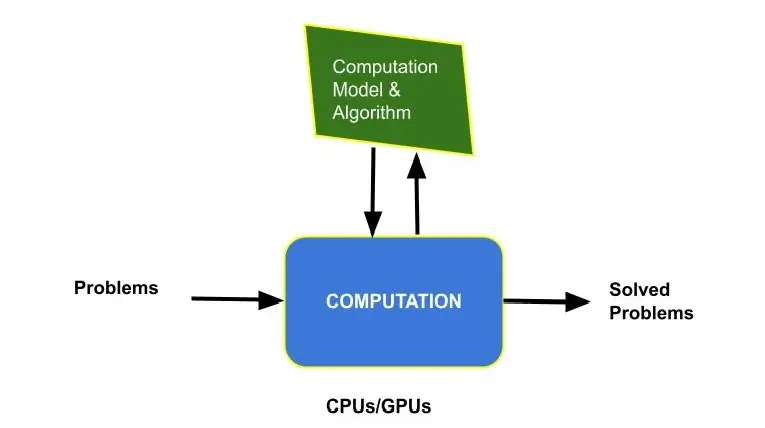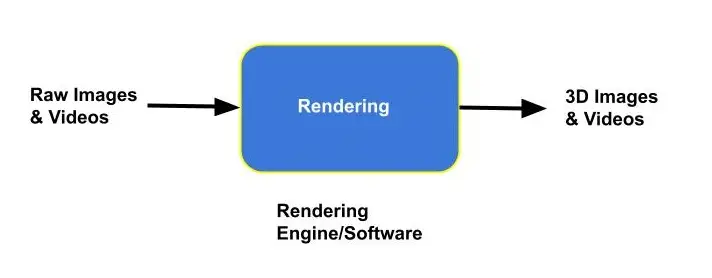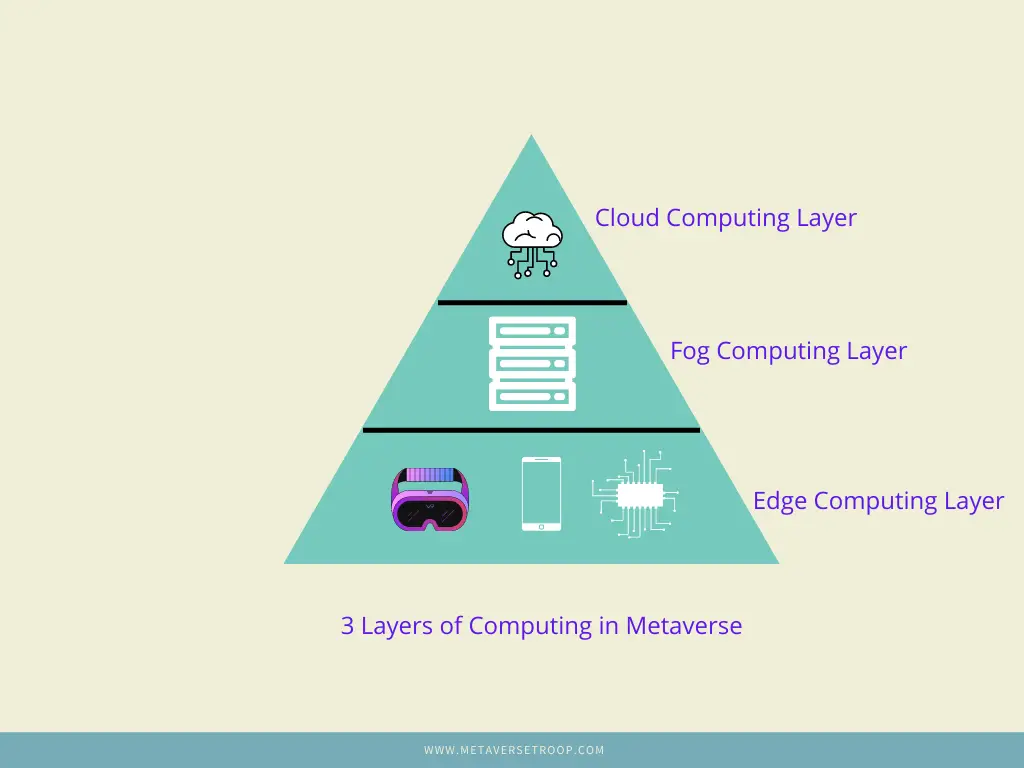Computation in Metaverse | Need for Computation in Metaverse | Parameters for Computation in Metaverse | Computation Challenges in Metaverse
Metaverse will be the 3D replica of your physical life where you can do everything you do in this physical world. To make this possible, high computation in metaverse is required to render immersive 3D worlds and run data hungry Artificial Intelligence (AI) application.
In this post, I will discuss the computation in metaverse in every respect. First, I will discuss the need of computation in metaverse and the key parameters associated with it. Then, I will touch on the topic of computation layers for metaverse (for details refer this post). At the end, I will discuss the computation challenges we are going to face in metaverse and list some solutions to solve this.
WHAT IS COMPUTATION?
In general terms, if you solve any mathematical calculation like addition, subtraction, etc, it is said as computation. Your brain does the computation. But, your brain does computation in solving logical problems, overcoming some difficult situations, thinking of solutions to a problem, deciding to do something, etc. All these tasks are computations.

Similar to our brain, a computer also does computation to perform some mathematical and logical functions. All the work to be done on the computer is called a problem. To solve this problems algorithms are designed efficiently to solve the problems.
Everything in the metaverse right from data collection to rendering data and videos to provide an immersive experience to users is considered computation. The computation is performed by CPUs and GPUs present in the devices involved in the metaverse.
NEED FOR COMPUTATION IN METAVERSE
Beside a reliable and low latency communication system in metaverse, it will require other services. The resource intensive services provided in the metaverse will require costly computation in metaverse.
Generally, there are 3 services that require high computation needs in metaverse. They are listed below and explained in detail.
- Physics Calculation
- Rendering
- Artificial Intelligence (AI)
PHYSICS CALCULATION IN METAVERSE
The 3D world in the metaverse works similar to our physical world. Real world physics is involved in all the objects in the 3D world of metaverse to provide users experience realism. These require realistic physics computations.
For example, when you drop or create a virtual asset in the metaverse like your avatar, its behavior should be governed by the laws of physics as in the real world.
The virtual assets with physics properties are usually built using Unity and Unreal engine.These engine ensures that these virtual assets in metaverse accelerate and respond to gravity, collisions and other physical forces.
These physics calculations put much pressure on the CPU and GPU of the machines running the metaverse.So, it needs teraFLOPS of graphics horsepower for computation in metaverse.
RENDERING IN METAVERSE
Rendering is a process of converting raw data of images and videos into 3D images and video files. In any metaverse, all the images, videos and 3D models requires a rendering process to display the objects for the users to see. So, the rendering process has a huge cost for computation of metaverse.
A rendering engine or software does all the process of rendering as shown in the figure below. Huge amount of computation power is required for rendering.

For example, games like Fortnite require teraFLOPS of graphics horsepower. As the user base and demand for metaverse projects like Fortnite, The Sandbox, etc is increasing day by day, imagine how much computing power will be required.
ARTIFICIAL INTELLIGENCE (AI) IN METAVERSE
Artificial Intelligence is a must for any metaverse. AI allows the users to experience highly immersive metaverse experiences. AI synergizes with AR/VR applications to provide services in metaverse like hand gestures to copy and paste files between computers.
AI techniques also are essential for the AR/VR rendering process as discussed in the previous section. You can take the example of DeepFovea which is used to reconstruct images. It can reduce the number of pixels while constructing high image resolution. Use of AI requires high computation in metaverse. But it also reduces some computation needs and resources enhancing rendering efficiency.
KEY COMPUTATION PARAMETERS FOR COMPUTATION IN METAVERSE
From the above section-need for computation in metaverse, you might wonder that computer resources are needed for developers and service providers only. But this is not true.
Computation resources are needed for users in metaverse for analytics, user’s edge devices to access the metaverse at mobile edge networks.
VR rendering is also done at the users end to provide them an immersive experience of the metaverse. Thus, computation in metaverse is done at all levels of stakeholders.
Since, computation in metaverse is required for all stakeholders of metaverse like developers, service providers, users, etc, there is need to consider few computation parameters.
These computational parameters are very much essential for development and sustainability of any metaverse project. The computation parameters are listed below.
- Support for device with limited computation capability
- Computation Protocol to solve straggler effects
- Support for wide variety of accessibility device of metaverse
- Privacy and Security
- Support for Scalability and Mobility
COMPUTATION LAYERS FOR METAVERSE
Most of the applications you use today are online applications and used mostly by mobile devices. Since mobile devices have limited computing power and storage space, these applications are hosted in cloud servers.
Cloud servers use its computing power to process, render and deliver the task provided by the low end mobile device of the users. In addition to cloud computing there are 2 additional layers – fog computing layer and edge computing layer to minimize the burden of cloud computing layer.
As you might know, metaverse requires much more computational power, storage space, bandwidth , etc to provide the immersiveness to the user. Most of the users will use metaverse in their hand held devices like mobile phones, tablets, etc.
So, to provide the usual experience of metaverse for all the devices, computing layers for metaverse is essential and must as listed below.
You can read in detail about these 3 layers of computing in metaverse from this blog post.

COMPUTATION CHALLENGES IN METAVERSE
Metaverse as of now is in its initial stage and still a lot of developments and improvement needs to be done. There are many challenges in the metaverse. One of the most prominent one is computation challenges.
In this section, I will list a few of the computation challenges in metaverse as of now. The detailed discussion will be done in some other blog post.
- Accessibility and immersiveness of Metaverse is done mostly through AR/VR devices. But these devices have many limitations like weak computation capability, memory storage, power capacity, etc.
- Millions of users will access the metaverse at a time like during a live virtual concert, playing online games, live matches, accessing online classes in metaverse, etc. Each user will have different demands and usage requirements.
Here advance demand prediction and scalability issues is a major problem. Alongwith, this problem the need of computation at that time is a major problem.
- Latency is another major challenge in the metaverse. Metaverse required near zero latency to fully experience it and that too in mobile devices. Computation latency is one of the major contributors of latency in the metaverse.
- To offer intelligent and personalized services in metaverse, Artificial Intelligence (AI) is necessary. AI requires high demand for memory and CPUs/GPUs.
- Privacy and Security is much more required in the metaverse as it involves sensitive data collected from the users. You can read the posts related to privacy and security in the metaverse as listed below.
WAYS TO SOLVE COMPUTATION CHALLENGES IN METAVERSE
To overcome, the computation challenges in metaverse can be solved by the following methods as listed below.
- Efficient AR/VR Rendering
- Scalable AI Model Training
- Privacy and Security
Detailed discussion will be done in the upcoming post. Some other real time solutions or ways to solve computation challenges in metaverse.
- Social aware collaborative computing
- Tradeoff between ubiquitous and Cognitive AI
- Human-centric Computing
- Decentralization
- Computation Interoperability
CONCLUSION
In this blog post, I have discussed in detail the need for computation in the metaverse – physics calculation, rendering and AI. Then I have listed some key computation parameters in metaverse. I have also touched the topics on computation layers for metaverse. At the end I have highlighted a few computational challenges in metaverse and listed some solutions to solve this.
